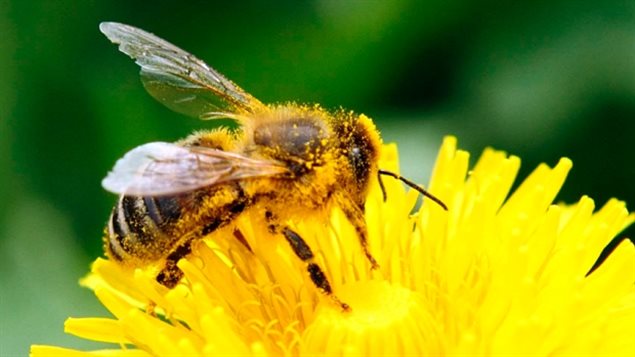“Neonicotinoids Bigger threat than DDT”
The Environment Commissioner for the central province of Ontario (ECO), had strong words at a news conference for the release of the ECO annual report.
Referring to a controversial insecticide used on a large portion of Canada’s food crops and commercial flower operations, Gord Miller says, “All the science is not done, but everything I have before me … suggests to me as an ecologist that this is the biggest threat to the structure and ecological integrity of the ecosystem that I have encountered in my life. Bigger than DDT”,
Canadian beekeepers have blamed the use of the neonicotinoids for the abnormally high level of bee deaths they’ve seen in the past few years since the insecticide began to be marketed about a decade ago. The insecticides are used in conjunction with the vast majority of corn and soy crops. It is even now found in flea-collars for pets.
They say sub-lethal doses act as neurotoxins confusing the bees which get lost, or forget to eat, while the queen can lay eggs in inappropriate places.The toxin is absorbed by the plant so that trace amounts are in the pollen which the bees collect.
Toxic dust rubbed off coated seeds during planting also blows onto other plants and into other ecosystems beyond the farmer’s fields. There is evidence the chemicals accumulate in the environment and affect aquatic life, butterflies, and birds.
“The science is very clear. It is absolutely linked to the problems with bees, the death of bees, but also the sub-lethal effects on bees, such as disorientation, which leads to colony failure,” Miller said in an interview on CBC TV, the public broadcaster
Miller said the province faces an ecological and environmental crisis if the bee population, which pollinates crops, continues to decline.
Act now, don’t wait
A plan was instituted to reduce the toxic dust from neonicotinoid-coated seeds during planting, and the government is conducting trials in agricultural areas. Ontario says it will wait for the results of those trials. However, the environment minister recommends that Ontario act now rather than wait.
Ontario beekeepers meanwhile have decided they can t wait for a government ban or moratorium and have launched a class action lawsuit against the makers of neonicotinoids, Bayer Crop Science and Syngenta.

On another matter the Environmental Commissioner called on the provincial government stop the practice of allowing commercial logging in Algonquin Park, made famous by painter Tom Thompson and the Group of Seven.
In the report Miller wrote that his office, “is deeply troubled that Ontario’s flagship park continues to receive the lowest level of protection of all the province’s protected areas.
The ECO recommends that the government publicly commit to ending the logging of Algonquin Provincial Park







For reasons beyond our control, and for an undetermined period of time, our comment section is now closed. However, our social networks remain open to your contributions.